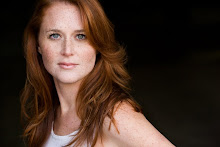

August 28, 2009 (An extra day)
After a lovely night of sleep (on a bed, did I mention there was a bed?), we get up and head to the lodge for breakfast and a meeting with Mike. We cut two extra days off our hike, and are hoping he has thoughts on the best way to use those days. He has.
Apparently Papa has called him and offered to take us for today. He wants to take us to his village to meet his family let us see his farm and his life. We agree that this is a fantastic plan and will let us see a side of Africa that Kilimanjaro and a safari won’t provide. Mike then suggests that we add one day of safari at Lake Manyara, a national park where a lot of elephant research has been done, that is on our way to the Ngorongoro Crater, our first official safari stop. This is all decided upon, Mike says he’ll see us in the morning, and we putter about sending postcards and things until Papa and our driver for the day, Simon, appear.
We all pile in the car and are on the road. We are headed to Marangu, the town at the base of the first trail up Kilimanjaro. Marangu is still the most traversed trail, it’s known as the Coca Cola Route because of this. Papa’s village, Mbahe, is about a kilometer from the Marangu trailhead. The drive will take almost two hours.
As we pass through Moshi on our way, Simon pulls over at a shop. Papa gets us out of the car and tells us this is the best place for fabric in Moshi, then quite pointedly looks at me and says ‘You can’t wear that to the village, it is ok in town, but not in the village. Go pick something out.’
I’m wearing a khaki, above-the-knee skirt. Not short by New York standards, but apparently too short for Chagga village standards.
Thus shamed, we head in. Lisa and Anita pick up a few things, and I choose a length of fabric. Papa says good, and hands it to one of the women at the shop. She heads in back, and in less than ten minutes returns with a kanga she has sewn. A kanga is a traditional wrap-around African skirt. I tie it on, he picks out a bag to match, and voila. ‘Good, now you look like an African woman.’
We pile back in the car, my indecency covered (ma you’d be proud), and make our way first to Marangu Gate. Papa Mandela shows us around his “office”—this is the official home of Kilimanjaro National Park—and takes us to see his father’s shop. His dad runs a highly successful gear rental shop here at the gate. We, in fact, rented a few bits and pieces from him.
Then we set off to see Papa’s home. We are concerned that we are showing up empty handed, and ask him if there’s a place to buy a bottle of wine or two. He says, ‘Beer. My mama likes beer.’ So we stop at a bar and pick up a rather large case of beer. We then turn down the ruttiest, rockiest, bumpiest dirt road that I have ever been on (and that’s saying something, I was raised in Idaho after all).
We meander slowly through what appears to be fields of coffee and bananas with occasional small homes. It’s a very quiet, green, secluded sort of place.
All of a sudden we round a corner and there is a huge crowd of brightly dressed people. Balloons and flowers everywhere. People are jumping out of the road to get out of the way. After we get through, Papa turns and says ‘Funeral.’ Ah. It looked nothing like the somber, indoor affairs we know.
We pull up to a large, steel gate. Simon honks and someone opens the door and we pull in. This is Papa’s home. The same home he was born in, the same home his father was born in, and the same home where his son was born. And as far as we can tell, they all still live here.
To be Continued...
Photos: Papa Madela in street togs. Plague at Marangu Gate.

No comments:
Post a Comment